#malwarebyte download and install
Explore tagged Tumblr posts
Text
Just had some straight up creepypasta shit happen. Computer suddenly bluescreens and it boot loops a few times. It takes forever, but it loads up again. The windows 10 background is old, and something feels off. I type my password. Doesn't work.
That's okay, it's long, I mess it up a few times. But eventually I take it slower. More deliberately. Making absolutely sure I get every single letter and symbol correct. Doesn't work. I do it again. Doesn't work. There's this desperate panic. I was watching malware videos before this happened, and had recently downloaded a lot of game mods I really didn't know much about. I put in security questions for my windows installation, but they weren't coming up when I requested to reset my password. Just a strange pop up asking to insert a password reset usb.
Then, I realize. The name displayed for the windows profile is different. It's… Older. I made the name of my new windows installation "Grace" just for convenience with recording for ChainmailChasers, but my old laptop drive installation was named Ebola. Uncertainty clouds my mind. Nervously, I type in my old password. Due to faded memories, my first attempt is the wrong password. But the second… Works.
It buffers just a little too long, just like the previous failed password attempts did, pausing as if the computer itself wasn't sure if the password was correct or not. But the desktop loads. My old desktop. It's so laggy from the drivers being incompatible that most of my mouse clicks aren't registering. My other drives showed up out of order in the file explorer, meaning they weren't wiped, but were blocked from access by windows. I didn't have authorization.
Google searches only pull up Blue Screen of Death results. No one is talking about my issue. I hit control alt delete and I only have two options: Shut Down and Restart. I shut down. It refuses to. I have to hold the power button. I load the bios, and wander around until I find the boot priority. Something so simple but specific that it felt deliberate. The crash had somehow swapped the boot priority from my SSD to my old laptop drive which is connected by SATA to USB. I swap it. It works.
Powershell /sfc scannow (a built-in windows utility that detects and automatically repairs damaged windows installation files) finds nothing. MalwareBytes detects nothing. My computer runs flawlessly again. All my accounts are untouched. But still, I'm left with this lingering feeling. Seeing that old desktop again, after a year… It was like seeing a ghost. Also, if this all sounded fairly circumstantial, imagining dealing with all of this high.
53 notes
·
View notes
Text
Hacked Account Warning
I'm in Asia Server by the way
There are pictures for proof
You don't need to have your login infos shared for you to get hacked.
There are some hackers that attack your email, and when they can't they attack your pc itself.
The destroyed weapons:

It was during my exam period that I was hacked. I just logged in to do dailies before going back to studying when I noticed my arle was doing WAY less damage. I checked her weapon and lo and behold it wasn't there. Destroyed. I checked alhaitham and his weapon was destroyed too. Same with Amos bow and a lyney bow. I didn't understand what was happening and contacted mihoyo. Someone logged into my account at 4 am, destroyed weapons and 2 artifacts, renamed wandered something racist and left. I was pissed and was talking back and forth with the mihoyo support as no device besides had logged in and I didn't give the infos to someone else. So how come the hacker got in without me receiving a confirmation email? Well I got my answer a day later when microsoft finally sent me an email informing me of a suspicious logging.
The logins...:







That's when I discovered how bad it was. For over a month, someone was trying to log into my window session and I wasn't informed by Microsoft! They used a VPN as it came from China, Russia, America and Brazil. They succeeded in the Brazil vpn. I changed all my info and did the necessary steps. I found many virus on the pc despite not downloading shady things and even a fake anti virus that I don't remember installing (SAntivirus) and it was VERY annoying to Uninstall. Thankfully I found videos to do it.
I scanned the pc using the Microsoft anti virus and found 4 virus, 2 of high danger. I did a deep clean by the way and it lasted over 6h. Even when I Uninstalled them they came back so I installed Malwarebytes who found 34 virus....the fake anti-virus was found with it by the way. After I destroyed them all I didn't have any attempt besides one which I didn't have the time to take it up to cyber criminality.
The Viruses:



So to any pc player, please be very careful and get a good anti virus. Scan your pc often as unfortunately there are very ill intentioned people around. The hacker didn't touch my hsr account, just my genshin where I spent a lot of time on it.
The alhaitham weapon was very sentimental as it was my first and I explored all sumeru desert to get it. I had lost both the 50/50 on it. Same for arle weapon, I lost the two 50/50 to lyney bow to get it. I was devastated because I'm ar 60 with no exploration left. Even the teapot is all done. For the wanderer name...all you have to know is they changed it to something racist towards black people and I had to fight with hoyo for them to realize and send me a name paper to change it.
ADVICE FOR PLAYERS:
-Scan your devices often
-Get a good anti virus
-Download from trusted sources, I know we all get the apk and the such but there are websites you can't trust!
-If you can, log out before shutting down your device
-Check your connection history of Microsoft. They don't warn you until it's too late.
8 notes
·
View notes
Note
Hey Peach I won't ask anything super incriminating or anything but do you need a VPN to torrent stuff? Or really good antivirus?
I know I should look into how to do that stuff but before I attempt anything of the sort, I wanna know if I should beef up my security before I start sniffing around.
Im really out of my element here 😭
hi hi, so there are a couple of things I do to keep my computer/data safe when torrenting - first of all, yes, a VPN is a great idea!! the one time I forgot to turn on my VPN before torrenting something at my parents house my dad got a letter from our internet provider about it 😵💫 (it basically was something about "your IP address was used to download copyright infringing material, don't do it again").
it's generally best practice to have some type of VPN set up before torrenting! try to stay away from free VPNs, from what I understand they're not the most reputable and oftentimes they're profiting off selling your data (the ol' "if they're not making money off the product then *you're* the product"). I hear good things about Mullvad and ProtonVPN - I believe at least Proton does have a free tier that just has a limit to how fast you can download things with it!
as far as antivirus goes, it's got its pros and cons. I actually don't always have it turned on, and I'm not a big fan of the built in Windows Defender (it tends to have a lot of false flags) - I like MalwareBytes and I'll do an occasional scan of my computer after downloading stuff & before actually running things. I personally find that antivirus programs tend to quarantine video game installation files when I try to run an installer for a game I torrented, which causes the installation to fail and then I have to go manually check the antivirus to un-quarantine the files 🙄 which is why I end up not having mine running all the time. but if it makes you more comfortable def keep it on, and just remember to check for quarantined files if you're having weird errors trying to install anything!
however I do also make sure that I'm visiting sites I generally trust so that lowers my chances of downloading anything sketchy (though not 0 - be mindful of what you download and open on your computer, especially executables (.exe files)!!) I find all sites I use either via direct recommendations from trusted friends who are very knowledgeable about information security and stuff, or from the r/piracy subreddit's megathread (they have a lot of recommendations for all different kind of media, and also a lot of helpful info about cautious pirating in general)
also, make sure that the torrent client you use is good! I've always used qBittorrent - it's pretty easy to use and set up, it's straightforward, open source, ad-free, and also has a lot of handy features (one of them being a feature in the advanced settings where you can have it only do things with your torrents while your computer is connected to your VPN, which is good for keeping your real IP address secure. if you want help figuring out that setting just reach out again and I'm happy to help!) whatever you do, please don't use μTorrent lol, that one sucks. also, you don't have to update it every time it comes out with an update, but it's generally a good idea to check the qBittorrent subreddit when an update does come out just to see if it deals with anything important security-wise - just recently, a pretty major backdoor vulnerability was identified and fixed, so it was actually pretty critical that everyone update to the latest version (to anyone reading this, make sure you're on 5.0.1 and nothing older than that!)
and also, a good Adblock like ublock origin will help keep you from accidentally clicking on nefarious links when trying to download things on the internet, so make sure you have that set up too!
also also, some regular websites (especially streaming services) HATE VPNs so if you have one running and you're trying to watch something on like, Netflix or your cable provider's streaming site and it's not working, pause the VPN till you're done! and that's where having your torrent client set up to automatically pause all torrents while your VPN is off comes in handy.
also also also, a note on torrenting etiquette - when you are torrenting something from other people (aka peer to peer/P2P file sharing) you are considered a "peer" and the people who have the full files and are sharing them with you via torrent are called "seeds". peers need to be connected to seeds to be able to receive the file. you will also have a ratio for each torrent - this is the amount of data you have sent vs how much you have received. a ratio of over 1.0 means you've sent more than you've received and is considered to be "good form". I usually stop seeding a torrent once it reaches above 1.0, and I do also often go stop seeding a lot of stuff below the 1.0 ratio if it looks like it has a lot of seeds, but I like to keep seeding when it seems like I'm the only one or just one of a few people seeding, especially for media that I already had a hard time finding, to make it a bit easier for someone else trying to torrent it. there are some things that I've waited months to finish torrenting just because nobody was seeding at all for a while 😭 so I do what I can to keep torrents alive myself.
sorry this ended up longer than I thought it would be, and probably longer than you expected, but I hope this is helpful! happy sailing the digital seas, anon :D
#petchyposting#I'm not an InfoSec expert by any means but this is what i have learned over the years
4 notes
·
View notes
Text
So Your Discord Got Hacked
A few days ago, my discord got hacked because I fell for the good old fashioned "friends working on a game" scam.
FIRST UP if any of your friends want you to try their new game, ask them identifying questions. I fell for this and feel like an absolute MORON.
BUT say you did fall for it, your discord went down and logged you off. HERE ARE THE STEPS TO TAKE.
DO NOT Log in on your computer. The virus the scammers use has a keylogger in case you have 2FA already. They need you to input your code to change the password on you. ALSO reroll any of your 2FA generated codes from the secondary device. The hacker will copy these in case you set up 2FA.
If you don't have 2FA and the hacker turns it on, IMMEDIATELY go here and submit a ticket. I will show an example ticket below, with the language I used.
Go to paypal, and if you see any charges, click on the discord charges and disable automatic payments. If you don't already have 2FA on paypal, turn that on, and once again, DO NOT use the device that got hacked.
Keep your email open. As soon as you get a response from support, you need to reply to that email.
UNINSTALL discord from the hacked device, along with anything you may have downloaded in the past 24 hours (like the unzipping program. And delete the hacker's program). Also delete the discord.exe file from your downloads on the computer.
RUN A VIRUS SCAN WITH DISCORD UNINSTALLED. Just in case they set the worm to jump out then worm back in. I used Malwarebytes - windows defender cannot catch what they are doing.
Restart your computer.
Run a second virus scan.
Download discord again directly from discord. Install from the new EXE file. Run a third virus scan just to be safe.
IF IT WORKED, the QR code login will load properly. The worm the hackers use blocks the QR code - this is so you type your password/the 2FA code. They also block your computer from seeing what other devices are accessing your account - because you'd be aware they're logging in.
WHEN YOU GET YOUR ACCOUNT BACK - change the password via a secondary device. My computer discord was hacked, so I changed the password via mobile. I also rerolled all the backup codes just in case. Discord staff turns off 2FA when they get you back into your account because it's very common for hackers to turn it on to keep you from getting in.
Log in via the QR code scan (if it was your computer). This is just a secondary precaution, I don't want my computer to know the password at all.
CONTACTING DISCORD SUPPORT:
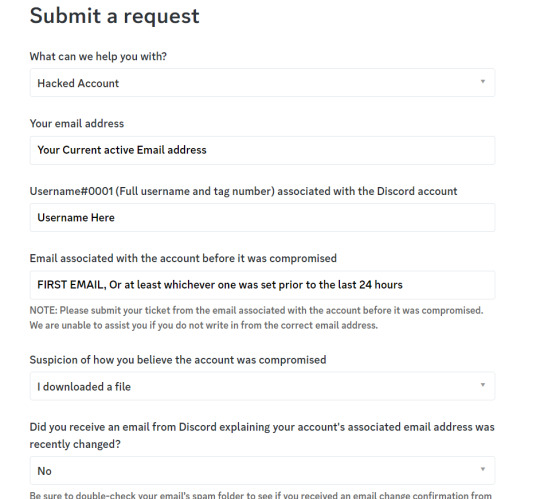
Note: you want the first email or an email prior to the last 24 hours just in case the hacker changes your email address. When staff is looking at your ticket, they use this as a confirmation, if it was changed today, that could be the hacker trying to use support to hack you back.
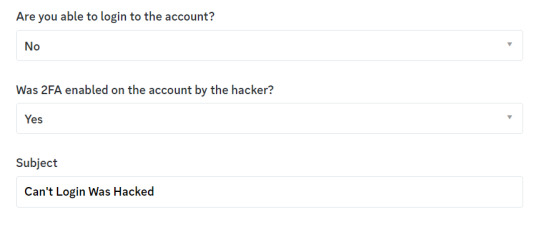
(Here there's a popup of recommended articles, I'm skipping that.)
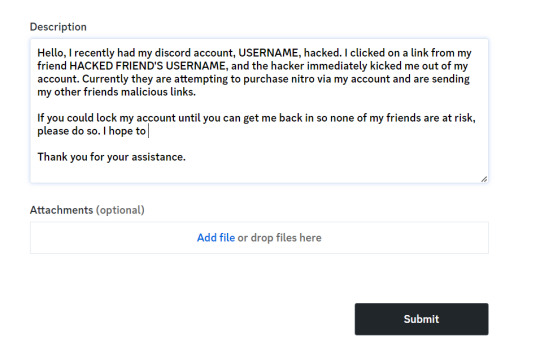
I don't know if I said any magic words but discord got me back into my account VERY quickly.
I got rehacked before I went through the steps of uninstalling and virus scans, but I quickly got the hacker out by doing mobile only on all the resets.
You can also tell if the hacker is there because your discord will keep logging you out randomly! This is (from what I figure) the hacker logging out your hacked device to get your 2FA codes, but they have to be fast, so if they miss it they log you out again.
#PSA#Steps to take if your discord is hacked#also always disconnect your paypal from discord after you get nitro#do that now actually#just in case
41 notes
·
View notes
Note
Hello, have you talker about your art process anywhere? I am very interested in how you got into glitch art/photomanipulation/however you’d call this, and i want to learn more. Do you have programs you use, plugins, do you use any physical media or scanography/scanner manipulation? I really want to hear about anything you wanna talk about regarding the creation process for your art. Thank you for sharing your work.
Yes! Unfortunately, I tried answering this question in a ton of detail but tumblr didn’t save it as a draft automatically - which was a frustrating experience to say the least - so this is my second attempt at answering this ask — you’ve asked a lot of really valuable questions here, I’ll do my best to be concise in my answers!
When I first began playing around with editing software, I was 16 and simply wanted to make memes and silly edits. This was around 2015-2016, whenever vaporwave was a fresh concept and Resonance was trending on Vine — which is a sentence that makes me feel fucking ancient. I was really entranced by vaporwave, which had this off-white nostalgia for post-consumerist 80s and 90s cultural trends. I later became interested in how many of those cultural trends persisted and evolved into Y2K culture and beyond.
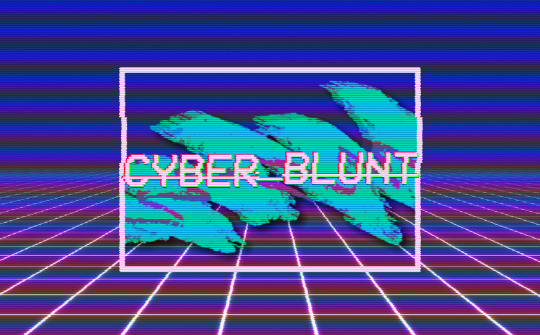


these are some of the images I was working on during that period of time, which were loosely inspired by indie horror and jazz cups and soundcloud rap. I was so proud of learning how to make my own scanlines using GIMP :)
Late 2016 I began my freshman year at a hoighty-toighty art school that I was too poor to attend, and quickly entered a mental health downward spiral — but I learned many valuable things, most of that info was painfully basic; my education prior to that was not anything special. I would not consider myself someone with exceptional aptitude for art — I just have a chronic compulsion to break things.
So, where to begin? My recommendation to anyone who’s newly interested in this style of artwork and editing:
Glitchet is a repository of info regarding many different styles and methods of distortion - from sonification to slipscans, there’s a ton of good info to comb through. Most of the techniques and tools covered are free to use, but there is some paid stuff out there too - but if you know your way around, virtually everything is free. More on that shortly :)
As for my process, programs, plugins, etc - there is a lot, and I don’t think I can cover everything. Primarily: Photoshop, After Effects, GIMP, ArtStudio Pro for iOS, Procreate, DestroyPix, and a number of other pieces of software that perform smaller, specific functions - such as BigJpg for AI-upscaling. I also employ analogue/physical distortion techniques like circuit-bending, slipscan, and more. These require additional hardware and knowledge; such as access to a copier/scanner, old CRT screens, and the ability to solder + work with low voltage electronics without accidentally shorting them out. Best part is that you can ✨layer✨ anything and everything, collage style — which is my favorite aspect, very playful and exploratory.
Now, if you’re like me and can’t afford fuck-all, but wholeheartedly believe that money should not be a limiting factor for creativity, I recommend installing the Adobe Creative Suite from downloadpirate(dot)com - which is also where I’ve gotten many of my plugins, although I do also pay for the plugins that I come to really appreciate, as they’re typically done by independent developers who could actually use the scratch. Same risks as any pirate cove: intrusive ads, popups, and redirect chains - use Ublock Origin to kill these annoyances. I recommend performing a scan with Malwarebytes after using any sketchy-looking-download site, but I was raised to be a bit paranoid so that’s purely preferential.
As for plugins:
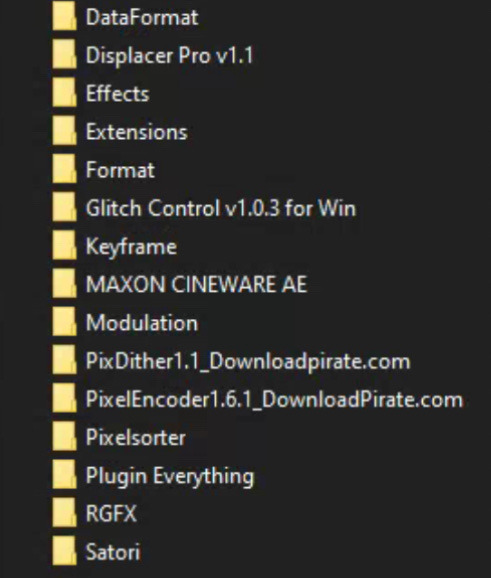
Filenames in this image may correspond with the developer of the plugin — you can just search the filename + ‘after effects plugin’ and you’ll almost certainly find your way.
Most commonly, I use Pixelsorter, Pixdither, Displacer Pro, Pixel Stretch, and Hacksaw — although some of the plugs that I use aren’t listed above, like Datamosher, which is a script-based solution that helps remove i-frames from a clip in After Effects, all without having to use VLC and any handwritten scripts (the ol’ fashioned way).
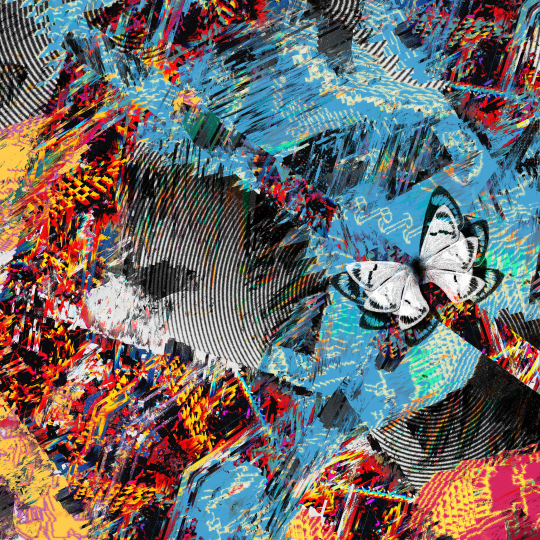

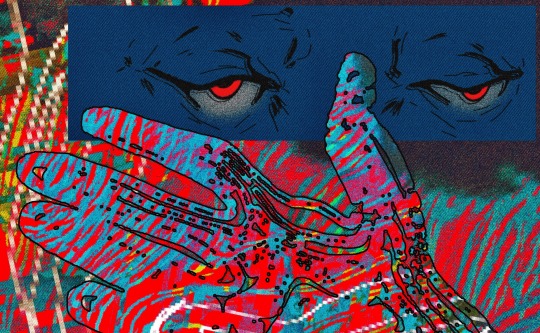

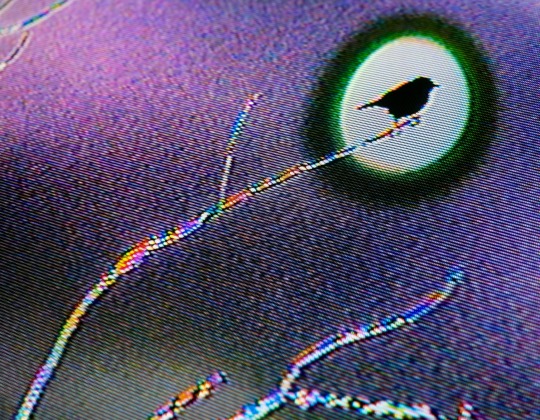
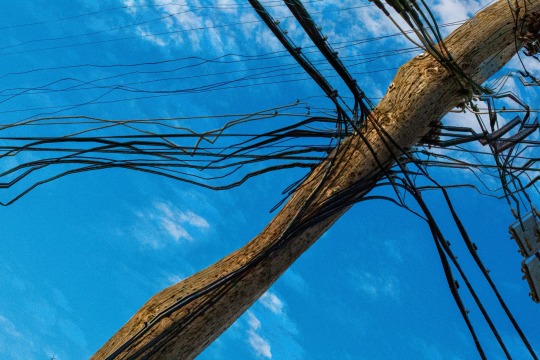
These are all from the last year or so, to show the relative growth I’ve experienced since my time spent as a creature of 16 years. Naturally, I’m also like, more of a person now - so the art is partly better because I’ve simply suffered more :p
When I started, I didn’t know any of the jargon or how to describe a specific effect I was trying to achieve - so I taught myself how to do stuff by googling around, and if I couldn’t find an answer (which was 90% of the time) I’d just try to figure shit out. Which rarely ever resulted in outright success, but was always a significant learning experience. That’s why I’m so quick to drop the link to Glitchet! Sometimes I can’t help but wonder what I’d be doing now if I had known there was an online library for info on how to produce different types of distortions - definitely would’ve spent less time trial-and-erroring my way through aesthetics.
In conclusion: there’s so much to try and you should try absolutely everything that interests you. It’s free if you’re cool enough to steal it; though some things (like hardware) are gonna cost. You don’t need talent or an exceptional education, though both of those things would certainly help — and you’ll never run out of things to learn because there are infinite ways to break shit. More so than anything else, you need a willingness to explore, experiment, and fail often. You’ll fail miserably at times, so a proclivity for humiliation is also a big plus. Eventually your failures will start looking like successes; but you’ll have forgotten the difference by then and will be free to make whatever the fuck you want :)
I’m glad that you enjoy the work! tumblr has always been the best place for me to share my lil jpegs and actually find a real sense of connection with others who are similarly jazzed. My life completely bottomed-out a few years ago and I was in a really bad place whenever I logged into my blog for the first time in half-a-decade and started posting again. My personal growth from then to now has been a strange and incredible experience, and I’m so glad that I had the art and the funny little gays on this website to help me through the toughest points and teach me valuable things about myself; so if I can give back a little knowledge, I’ll gladly take that opportunity! I hope these findings serve you as well as they’ve served me.
#my asks#THANK YOU!!#I hope this is formatted in a way that is easy to read - clarity and concision are not my strongest skills#godspeed!#documentation#reference
19 notes
·
View notes
Text
If an antivirus you use flags Glaze as a threat, ignore/whitelist it
Today I had Windows Defender flagging the new version of Glaze as a Trojan. I looked into it on Twitter and it turns out that AI bros took Glaze and uploaded it to virus databases to have it falsely flagged as malware, which has resulted in some antivirus programs falsely flagging it at such. I've scanned Glaze with Malwarebytes and it returned no warnings.

If you downloaded Glaze and your antivirus program flagged it as Trojan, whitelist it. Glaze developers are currently in the process of getting Glaze signed.

[ALT text, image is a screencap of a paragraph on Glaze's website] "OS-specific notes. For Windows users, we are in the process of "registering" the Glaze app with Windows. Getting these signature keys is taking longer than we expected, so Glaze.exe is currently signed with a non-EV key. And you will likely get a warning when you install Glaze for the first time. This should go away as more users download Glaze and the our developer key gets a higher reputation as a result with Microsoft. For Mac Intel users, the app is currently limited to machines running MacOS 13 and higher. We will look into supporting older MacOS versions, but did not want it to delay the Glaze release."
Glaze can be downloaded here. The new version uses a much more subtle cloak and now works on flat shaded/cel shaded art styles and photography, and even has a limited img2img protection.
8 notes
·
View notes
Text
Hey so. Dont download the new official fnaf troll game that has the secret hints at the movie.
both windows defender and malwarebytes have alerted me to it literally installing a fucking trojan.
4 notes
·
View notes
Text
*downloads/installs malwarebytes*
*sets to free edition and not the premium paid free trial*
*runs scan*
*finds nothing*
….okay, I’m actually discovering new things, like how my antivirus (windows defender) actually does have more scan options than the quick scan. Anyway now I’m running a full scan and not a quick scan. If this fails then I legit give. I can only watch videos on previous laptop. I can only view videos on tumblr mobile. I’m so close to giving in the ghost.
3 notes
·
View notes
Photo
i think this is really funny but at the same time it really depends. Hacking can come in a variety of different formats like Trojans (Remote Access as well), phishing links, (s)extortion, keylogging, ransomware etc .. like even though this post has some truth to it you should still be incredibly careful online!!! Even just one misclick can get you a nasty virus and even just existing on the Internet in general can get you hacked!! This is your reminder to change your passwords on a monthly-every six month basis and when I say that, I don't mean the same password on all accounts!! This is also your reminder to check links you're sent, put them into virus total and if you've already downloaded it, remove it immediately :3 also install an antivirus just to be safe <3 (Malwarebytes my beloved)

30K notes
·
View notes
Text
Why Your Computer Gets Slower Over Time — And What You Can Do About It

Ever wondered why a computer that once felt lightning-fast now takes forever to load? You're not alone. Over time, every computer tends to slow down. Whether it’s an older machine or a fairly new one, the frustration is real. Understanding why this happens is the first step to fixing it—and even preventing it.
In this guide, we’ll explore the most common causes of slow PCs and what you can do to bring them back up to speed. If you’re looking for more in-depth solutions, don’t miss our full guide on how to speed up a slow computer.
1. Hidden Bloat and Startup Programs
You install a cool new app today. Then another one next week. Eventually, your system is packed with software—some of which you don’t even remember downloading. Many of these programs run in the background, especially at startup, slowing down your boot time and eating up system resources.
💡 Quick Fix:
Open Task Manager and check the Startup tab.
Disable apps you don’t need launching at startup.
Uninstall programs you no longer use.
2. Running Low on Disk Space
A nearly full hard drive can really hurt your PC's performance. Windows needs free space to manage system files and temporary data. When your drive is full, everything slows down—searches, app launches, and even basic file browsing.
🧹 What to Do:
Delete junk files and downloads.
Use Disk Cleanup or Storage Sense (on Windows 10).
Empty the Recycle Bin regularly.
This small habit can significantly speed up your machine.
3. Malware and Background Apps
Malware isn’t just a security risk—it’s a major performance killer. Even if your PC isn’t showing obvious signs of infection, malicious software could be silently running, using up memory and CPU power.
🔐 Recommended Actions:
Run a full system scan with Windows Defender or Malwarebytes.
Check for browser extensions that might be slowing down your web activity.
Avoid downloading cracked software or files from unknown sources.
Just keeping your PC clean can make a huge difference in speed and stability.
4. Outdated Hardware or Drivers
Sometimes, it’s not the software—it’s the hardware. If you’re still running on a traditional hard drive, switching to an SSD can make your computer feel brand new. Also, missing or outdated drivers can cause hiccups that slow everything down.
⚙️ Upgrade Ideas:
Upgrade to SSD if you're using an HDD.
Add more RAM if your system is lagging with multiple open tabs.
Update your graphics and chipset drivers regularly.
5. How to Keep Your Computer Fast (Even After Years)
Maintaining a fast PC isn’t just about fixing problems—it’s about building healthy tech habits. A few minutes of monthly maintenance can go a long way.
✅ Pro Tips:
Restart your computer at least once a week.
Keep your system and apps updated.
Schedule regular cleanups using built-in tools.
For a more advanced, step-by-step guide, check out our full article on how to speed up a slow computer. It includes expert-level tips tailored for Windows 10 users.
Final Thoughts
Computers slow down for a lot of reasons—but that doesn’t mean you have to live with it. Now that you know what causes the lag, you can take smart steps to keep your system running smoothly. Whether it’s clearing space, upgrading hardware, or simply restarting more often, every small action adds up.
And remember, when you’re ready to dive deeper into the fix, we’ve got a full breakdown of 10 tech tips to help you speed up your computer, right here.
1 note
·
View note
Text
How to Install APK Files on Android: A Step-by-Step Guide

Android’s open ecosystem allows users a high level of customization and freedom. One of the most powerful features that Android offers is the ability to install APK files manually. APK files (Android Package Kits) are the file format used by Android to distribute and install apps. This guide will walk you through the process of installing APK files on your Android device step-by-step, whether you're looking to try out an unreleased app, access a version of an app not available in your region, or simply install an app that's not on the Google Play Store.
Before we dive in, a quick disclaimer: Always make sure you're downloading APKs from trusted sources to avoid malicious software or data breaches. Now, let’s break down the process.
What Is an APK File?
An APK file is the package file format used by the Android operating system for distribution and installation of mobile apps. Think of it as an installer—just like .exe files on Windows or .dmg files on Mac. Installing APK files allows you to sideload apps onto your device without using the Google Play Store.
This can be particularly useful for developers testing new applications or users accessing apps restricted in their country or region.
Step-by-Step Guide to Installing APK Files on Android
Step 1: Enable “Unknown Sources”
By default, Android blocks installation from unknown sources to protect users. To install APKs, you need to allow permission.
For Android 8.0 (Oreo) and above:
Go to Settings > Apps & notifications.
Tap Advanced > Special app access > Install unknown apps.
Choose the app (like Chrome or your file manager) that you’ll use to download or open the APK.
Enable “Allow from this source”.
For Android 7.0 and below:
Go to Settings > Security.
Enable “Unknown Sources”.
Step 2: Download the APK File
You can download the APK from a trusted website. Some popular APK repositories include:
APKMirror
APKPure
F-Droid (open-source apps)
Make sure you verify the source and read user reviews or comments before downloading.
Step 3: Locate the APK File
Once the download is complete, open your File Manager and locate the APK in the Downloads folder (or wherever your browser saves downloaded files).
Step 4: Install the APK
Tap the APK file. You may be prompted to allow your browser or file manager to install unknown apps (if not already enabled). Once you grant permission, tap Install.
Step 5: Launch the App
Once installed, you’ll see a confirmation screen. Tap Open to launch the app, or Done if you want to open it later from the app drawer.
Things to Keep in Mind
Updates: Apps installed via APKs won’t automatically update via Google Play. You’ll need to manually download and install newer versions.
Permissions: Be cautious about granting sensitive permissions to sideloaded apps.
Device Safety: Consider using antivirus software to scan APK files before installation.
Planning to Build Your Own Android App?
If you’re reading this guide as a developer or someone interested in launching your own app, you might also be thinking about costs and planning. That’s where a mobile app cost calculator can help you estimate the budget based on your desired features, platforms, and development complexity.
If you're interested in exploring the benefits of Android app development services for your business, we encourage you to book an appointment with our team of experts. Book an Appointment
Bonus Tips for Installing APK Files
Use a VPN if you're trying to download apps restricted in your country.
Use Split APK Installer (SAI) for complex APKs or app bundles that include multiple files.
Keep Storage in Check: APK files can take up significant space, especially for games. Regularly clean your download folder.
Security Best Practices
Use Antivirus Apps: Apps like Avast, Bitdefender, or Malwarebytes can scan APK files for threats.
Check App Certificates: Tools like APKMirror verify digital signatures so you know the app hasn’t been tampered with.
Backup Your Data: Just in case something goes wrong during installation or with the app behavior afterward.
Final Thoughts
Installing APK files on Android can be incredibly empowering. It opens the door to new apps, early releases, and customization options that go beyond the limitations of the Google Play Store. Just be sure to stay informed, use trusted sources, and prioritize your device’s security.
If you’re exploring APK installation because you’re developing your own app or testing a client build, partnering with a reliable android app development company is a smart move. From design to deployment, professional developers can help ensure your app meets the highest standards and gets to market smoothly.
0 notes
Text
I use this software.
It's an easy way to turn off settings in windows that you'd normally have to put a bit of effort in to find. Settings like trackers and a bunch of other stuff.
It works for windows 10
Revo Uninstaller is a great program for force uninstalling programs you couldn't uninstall otherwise. Like Microsoft Edge.
If you use it to uninstall edge and its not finding the program when you search for it, you'll have to open edge, then use the target mode which allows you to select desired programs manually.
target the opened Microsoft edge window and it'll start the process.
The cool thing about this program is that is does a hard uninstall, completely wipes out everything related to the program and it's stuff in the registry.
might I add, if you uninstall Microsoft edge, it will remove copilot as well. I've done this and it's been a few months since then I think. I've updated my laptop a few times and it hasn't come back. though if you want to avoid edge from coming back with an update, here's a vid on the more indepth process of its removal.
Something I usually do is go into my app manager or program manager window and read through what all is installed. I delete anything I didn't install myself and doesn't have a purpose. If you're not tech savvy, have a web browser open to search for programs you don't recognize. if it looks necessary, leave it alone. Usually windows is pretty good about not letting you uninstall important programs but it's good to play it safe.
Doing this whenever you notice a sudden dip in pc performance is a great way to catch unwanted programs that may have slipped in with something you downloaded recently. Paired with a good anti malware program like Malwarebytes, youre pretty much golden.
last tip.
It's a pretty good practice to Optimize and Defrag your harddrive regularly. It basically does a clean sweep of your harddrive by deleting unnecessary files.
Here's a link to instructions on how to do that. When you set about this process, you should have an option of to what degree the clean up is done (meaning what files is targeted), how regularly this process happens.
It usually deletes residual files, stuff in your downloads folder, trash folder, and stuff like that. you'll get to see what all is there when you do it before you confirm the clean up.
After doing all that, you've got yourself a nice and clean pc that should work better than it did before.
All the programs I linked to are free and can be used without paying for them.
I've been super into computers since I was kid so these are pretty solid methods of pc maintainance on the virtual side. If you have a proper box pc, and I guess if you're feeling brave enough to open up your laptop, don't forget to clean use an air duster to clean out your consul.
I promise you, nothing will help more than a clean pc and cooling fans.
i thought my laptop was on its last leg because it was running at six billion degrees and using 100% disk space at all times and then i turned off shadows and some other windows effects and it was immediately cured. i just did the same to my roommate's computer and its performance issues were also immediately cured. okay. i guess.
so i guess if you have creaky freezy windows 10/11 try searching "advanced system settings", go to performance settings, and uncheck "show shadows under windows" and anything else you don't want. hope that helps someone else.
#its because the os is not properly optimized#you have to debloat it then strip it down to bare bones before doing anything#in regards to windows running like shit#you see#windows is an accordian of itself#its backwards compatibility isnt a simulator#its still got its old old code deep in there#im not sure how far back it is#but in windows 11 when it first came out#you could right click and back pedel in a sense to older option menues#meaning it just kept going into the code and you would get older option menu designs#backwards compatibility is good#but i feel like windows needs to be gutted and scrubbed clean#then new lighter software needs to be developed for backwards compatibility#i doubt it would happen but honestly windows is such a heavy and chunky os#mac and chrome os is relatively light by comparison#its because mac is office work targeting so theres not as much bloat going on there#someone correct me if im wrong though#this is in regards to windows running like shit#windows 10
229K notes
·
View notes
Text
It is common knowledge than an antivirus program is one of the best ways to keep a device or network security. What is not very well known is that the choice of antivirus has a profound effect on how secure a device will be. It is important to avoid free antivirus programs as they will often consume system resources without adequately protecting your device. They should never be a first or sole line of defense. If you do have an antivirus program installed, make sure to check that it is working correctly.How To Check an Antivirus Program - The EICAR Test FileThe quickest and most standardized way to check your antivirus is using the European Institute for Computer Antivirus Research (EICAR) testing file. The EICAR testing file is a string included in most antivirus programs for testing purposes. The string is meant to act like a virus so that the software will detect it. You can download the file or alternatively you can create one yourself quite easily. Save the following string into a notepad file and save it as EICAR.COM.X5O!P%@AP[4PZX54(P^)7CC)7}$EICAR-STANDARD-ANTIVIRUS-TEST-FILE!$H+H*When you save the file, it should trigger an alert automatically on your antivirus program. Windows Defender picks up on it within 10 seconds and triggers an alert, and most antivirus kits will automatically quarantine the file. Other Security MethodsThere are other ways to ensure your antivirus is working correctly and to secure your machine. If you have a Windows device, make sure that updates are scheduled. While these updates can be irritating, never switch them off as they contain essential patches. It can also be a good idea to visit the HOSTS file and replace it with the default, as some malware can modify this file.It is also possible to compare the different types of antivirus software programs online. Many types of antivirus excel in one category and perform poorly in others so it can be a trade-off in many instances. However, there are certainly better and more recognized types of antivirus protection programs. Avast antivirus utilizes little system resources and is very low maintenance, however, it is better at prevention than removal for certain viruses. Norton Antivirus is another well-known antivirus, though it uses more system resources. It can depend on what you are doing, some can affect certain operations such as downloading, while others can affect other operations such as uploading and running executables.A popular combination is to use an antivirus program such as Avast and complement it with MalwareBytes, which is useful for detecting malware. A malware protection tool along with an antivirus program is frequently recommended by security specialists. Windows Defender is another good tool available on Windows 10, but it needs to be complemented with a malware detection tool for complete protection. It should be noted that prevention is always the best defense, and basic online security habits should be adhered to at all times.
0 notes
Text
FBI Warns: Free Online File Converters Are a Cybersecurity Threat
The FBI has issued a warning about the dangers lurking behind free online file converters. Cybercriminals are exploiting these tools to scrape personal data, deploy malware, and even distribute ransomware. If you’ve ever used an online service to convert a document, video, or image format, you could be at risk.
How Are These File Converters a Threat?
Many online file conversion websites and downloadable apps appear to be legitimate. However, cybercriminals often disguise malicious code within these platforms, making them a significant security risk. Here’s how they compromise users:
• Data Harvesting – Many of these services collect personal and sensitive data from uploaded files, which can be sold on the dark web or used for phishing attacks.
• Malware Distribution – Some converters embed malware in the converted file, which executes when opened, leading to potential system compromise.
• Ransomware Attacks – Infected files can deploy ransomware, locking users out of their own systems until a ransom is paid.
Who Is at Risk?
Everyone from individuals to businesses can be targeted. Small to mid-size businesses (SMBs) are especially vulnerable due to limited cybersecurity resources. Employees who unknowingly upload company files to an insecure converter can expose confidential data to cybercriminals.
How to Stay Safe
To avoid falling victim to these malicious converters, follow these security best practices:
• Use Trusted Software – Stick to reputable, secure file conversion tools from well-known vendors.
• Avoid Uploading Sensitive Documents – If a file contains confidential or personal data, do not use online converters.
• Verify Website Authenticity – Be cautious of conversion websites that lack HTTPS encryption or have numerous pop-up ads.
• Implement Endpoint Security – Businesses should use security tools that detect and block malicious downloads.
• Educate Employees – Awareness training on safe file handling can prevent accidental data exposure.
Final Thoughts
The convenience of online file converters comes with significant risks. Cybercriminals are taking advantage of unsuspecting users, and the FBI’s warning highlights the need for vigilance. Always question the security of free online tools and opt for safer alternatives.
🔹 Have you ever encountered a suspicious file converter? Share your experience and let’s discuss how to stay protected.
References:
• FBI Denver Warns of Online File Converter Scam: FBI.gov
• Warning over free online file converters that actually install malware: Malwarebytes
• FBI 'Increasingly Seeing' Malware Distributed In Document Converters: TechRepublic
0 notes
Text
Software Updates -
Patch My PC Home Updater
Patch My PC Home Updater: The Ultimate Tool for Keeping Your Software Updated
Keeping your software up to date is crucial for security, performance, and access to new features. However, manually updating multiple programs can be time-consuming and frustrating. That's where Patch My PC Home Updater comes in—a lightweight, free, and powerful tool designed to automate the software updating process on your Windows PC.
What is Patch My PC Home Updater?
Patch My PC Home Updater is a free utility that simplifies the task of updating over 300 popular third-party applications, including browsers, security tools, messaging apps, and multimedia software. It scans your system for outdated programs and automatically updates them with minimal user intervention.
Key Features
1. Automated Software Updates
Patch My PC scans your installed applications and provides a clear overview of outdated programs. With a single click, it updates them to the latest versions, saving you the hassle of searching for updates manually.
2. Extensive Software Support
The tool supports a vast library of commonly used software, including:
Web browsers (Google Chrome, Mozilla Firefox, Microsoft Edge)
Security tools (Malwarebytes, CCleaner, Avast)
Media players (VLC Media Player, Spotify, iTunes)
Communication apps (Zoom, Skype, Discord)
And many more!
3. Silent and Bulk Updates
One of the standout features is its ability to install updates silently in the background. This means no pop-ups, installation wizards, or unnecessary confirmations—just seamless updates.
4. Scheduled Updates
You can set Patch My PC to run updates at scheduled intervals, ensuring your software is always up to date without manual intervention.
5. Portable and Lightweight
The program is lightweight and doesn’t require installation. You can run it from a USB drive, making it a handy tool for IT professionals and tech enthusiasts.
6. Uninstaller and Bloatware Management
In addition to updates, Patch My PC allows you to uninstall unwanted software and disable startup programs to optimize system performance.
How to Use Patch My PC Home Updater
Download Patch My PC Home Updater from the official website.
Run the application (no installation required).
Scan for outdated software – the program will list all outdated apps in red.
Click ‘Update’ to start the updating process.
Sit back and let Patch My PC handle the rest!
Why Use Patch My PC Home Updater?
Saves Time – No need to manually check for updates.
Enhances Security – Reduces vulnerabilities by keeping software patched.
User-Friendly – Simple interface with automation features.
Completely Free – No hidden costs or ads.
Final Thoughts
Patch My PC Home Updater is a must-have utility for Windows users who want a hassle-free way to keep their software up to date. Whether you're an individual user or an IT professional, this tool offers a simple yet effective solution for managing software updates efficiently.
Try it out and experience the convenience of automated updates today!

0 notes
Text
How To Download Malwarebytes Software - Step-by-Step Guide
In this article, I will discuss how to download Malwarebytes software. Downloading Malwarebytes is a straightforward process that ensures your device is protected from various online threats. By following simple steps on the official Malwarebytes website, you can install the software and start safeguarding your digital environment effectively. What Is Malwarebytes Software? Malwarebytes is a…
0 notes